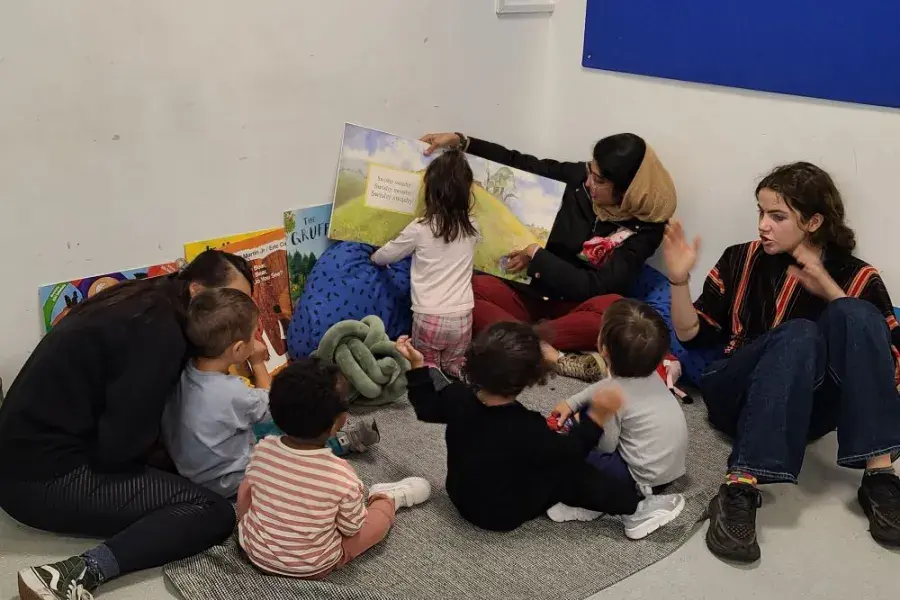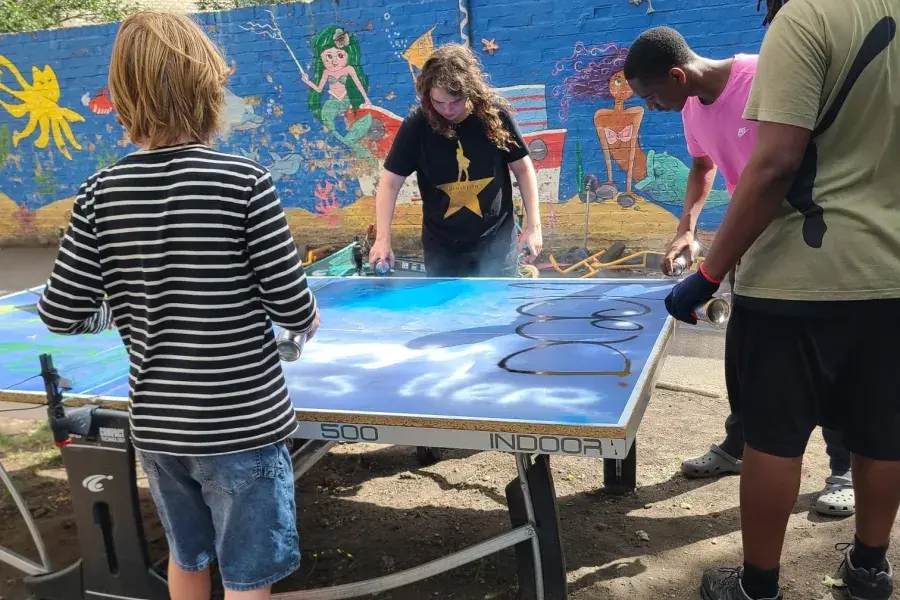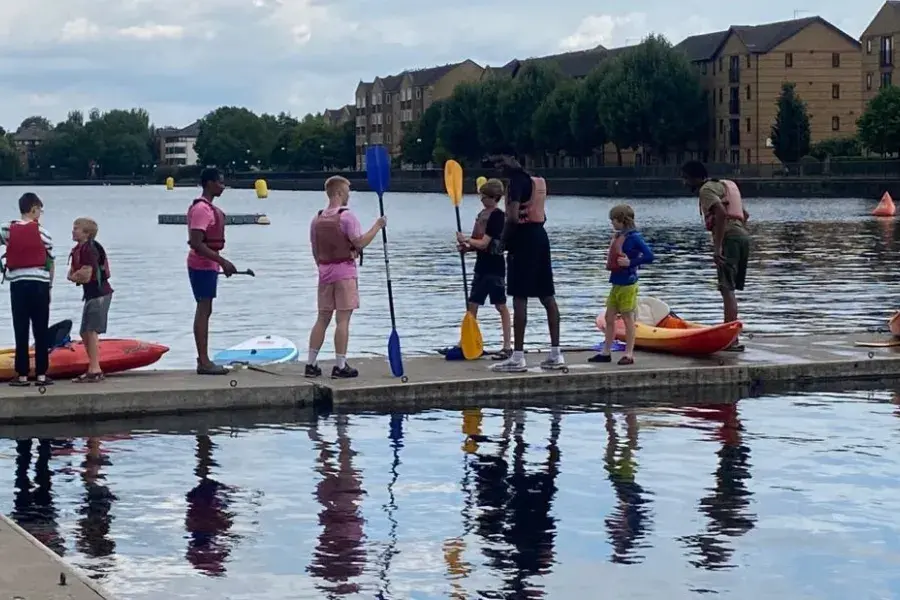The Art of Hand-Waving: The Quest for Communication
In the second part of our series on how to communicate more effectively when there is a neurodiversity, one of the mothers in our community shares her experience of Makaton, a language program that uses a combination of signs, symbols, speech, facial expressions, eye contact, and body language to help people communicate.
"The most important thing in communication is to hear what isn't being said." - Peter F. Drucker
In a city where you can summon a taxi with a swipe of your phone and catch the latest celebrity gossip with a few taps, one would assume securing communication resources for a non-verbal child would be straightforward. But as I discovered, navigating the world of Makaton - or rather, its absence - is anything but easy.
The Dilemma of Connection
Ah, my eternal parenting dilemma: which is more embarrassing - flailing your arms around cluelessly in a sincere attempt to communicate or enduring the bewildered stares directed at your five-year-old lounging in a pushchair like he's on a luxury cruise? Could you imagine not being able to speak to your child, or worse, watching them struggle to express simple needs like hunger or comfort?
This is me - stood in the middle of Hyde Park, London, on a hot summer's day - hands flailed in an attempt to connect with my five year old, pre-verbal son while strangers watched, puzzled. In these moments, I wondered which was harder: the stares or the silent gap between us, longing to be bridged. Amid the giggles and fleeting moments of eye contact, a haunting question lingers in my mind: Does he truly understand what I’m trying to communicate?
A Parent’s Desperation
Even with the convenience of online classes, finding time to fit them into my day felt like trying to squeeze an extra hour into a 24-hour clock. Between juggling the complex needs of three neurodiverse children and the constant demands of parenthood, it’s hard to find a window for myself that isn’t already occupied. And then there’s the budget. Let’s just say paying for two GCSE tutors doesn’t leave much wiggle room for extra expenses. Education is demanding enough without adding another tab to the bill - and trust me, tutors don’t come cheap. So, those online classes? They’re just another luxury that’s not making the cut right now.
But let’s not forget the bonus round: two pensioner parents who seem to need a little more help these days. Somehow, my siblings have perfected the art of being perpetually “busy.” So here I am, helping them with everything from doctor’s appointments to deciphering Netflix, and what little free time I thought I had has officially evaporated.
The World of Makaton
And so, I learned to improvise. My hands became the ultimate multitaskers - moving up, down, back, forth, diagonally, and even in wild zigzags. I mastered signs like “hungry” and “more” with the finesse of a BBC sign language interpreter, adding a bit of flair for good measure. Rubbing my tummy to sign “hungry” became oddly comforting, too. Each small victory - a successful request for a snack or a moment of understanding - felt monumental.
Makaton is more than just a communication tool; it’s a lifeline. By combining speech, signs, and symbols, it provides a means for both my son and me to express ourselves. Studies have shown that Makaton helps improve language development, enhances comprehension, and reduces frustration, making it easier for children to communicate their needs and feelings - though I still can’t quite decipher his “I’m too busy for a nap” face! Makaton boosts language development, enhances comprehension, and curbs frustration. It's like giving children a megaphone for their needs and feelings - just without the feedback screech.
Limited User-friendly Resources
I also discovered some unstructured on-line resources, from delightful Makaton booklets to Mr. Tumble on CBeebies, who somehow always seems to be having more fun than I am. Let’s not forget the multitude of YouTube videos teaching Makaton signs - perfect for parents like me, who are eager to connect with our pre-verbal child, while desperately trying to remember which sign means “finished” versus “time-out.”
In that moment of digital desperation, reality hit me like an unexpected downpour in July. What I was craving, after all, was something simple, convenient and tangible, like a pack of flash cards or a mini booklet - easy to toss into my bag for those moments when the need for a sign strikes. Yet here I was, navigating the web like a lost tourist in a foreign city, longing for a straightforward solution. The irony is palpable: I just wanted to learn new signs without the hassle.
The Charm of Our Own Language
Despite the limited user-friendly resources, we’ve crafted our own method of communication. There’s something oddly charming about expressive hand gestures. Laughter and enthusiasm have become our shared family language, transforming what could be a struggle into a series of joyful moments.
In these small exchanges, I’ve come to appreciate the beauty of connection beyond words. A simple wave of a hand can convey excitement, a gentle squeeze can express understanding, and a playful mimicry of gestures often leads to fits of giggles. Each shared sign is a reminder of our unique bond, a testament to our resilience as we navigate the world together. In those precious moments, amidst the laughter and the learning, I realize that we may not have the traditional tools, but we have something far more powerful: the ability to communicate with love and creativity.
The Weight of Silence and the Unbreakable Bond of Determination
Every day, I navigate this silent world, where the gap between us sometimes still feels vast and overwhelming. I see the joy in his eyes, yet I wonder if he grasps the love and intention behind my gestures. As frustration mounts over simple requests - like asking for a snack - the intricate dance of hands and expressions can become heart-wrenching. In those moments, I long for the ease of spoken words and the comfort of knowing he understands me.
But in this struggle lies a deeper truth. Each challenge we face has forged an unbreakable bond between us. With every shared smile, I realize love transcends words. He may not always comprehend the specifics, but he feels my love and unwavering support. This journey has taught me resilience. After all, communication isn’t solely about spoken language; it’s about the depth of connection we create through shared experiences. Each day, I choose to embrace this challenge, knowing together we can bridge our gaps.
Envisioning a Better Future
In those moments of struggle, I envisioned a better future: local libraries and help centres stocked with user-friendly Makaton resources. Imagine strolling into your local library or a public help centre greeted with “Need help signing ‘toilet’?” Here’s a pack of basic Makaton flash cards. Such simple user-friendly resources could transform how families communicate, turning every library visit into a chance for connection and support. So I hold onto hope for more resources and support in the future. If our neighbourhood can cater to Finnish gluten-free pastries and dog-friendly cafes, surely there’s room for a few Makaton booklets and clubs. Until then, I’ll continue to wave my hands with gusto, cherishing every moment of connection we achieve. Our hands may speak differently, but our hearts remain in sync.
To every parent facing similar struggles, remember: even in silence, there is power. Your love speaks volumes. Through patience and creativity, you can nurture a bond that words may never fully capture. Together, we can overcome, inspire, and communicate in ways that resonate far beyond speech. How have you found strength in the unspoken moments, and what creative ways have helped you build connection in the face of silence?
We’d love to hear from our community: what challenges have you faced, and what strategies have helped you bridge the communication gap with your child? Share your stories and suggestions with us, and together, we can create a space for support and understanding.
Click here to explore Makaton books available for purchase. (affiliate link)
Here at the Neurodiversity Family Hub, we are working to build our library of Makaton resources to better support our community, and we include Makaton in our clubs - for example teaching parents a new sign each week at Tiny Tribe. #wetalkmakaton




